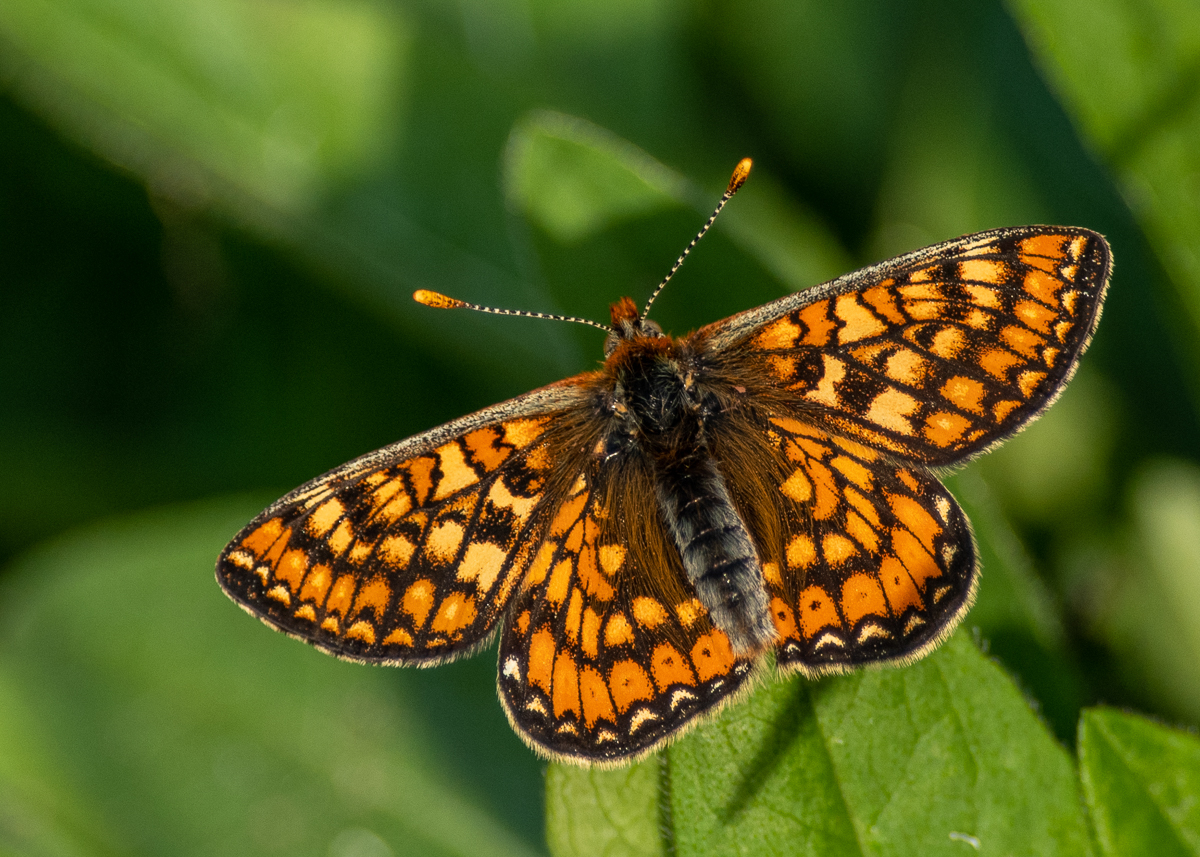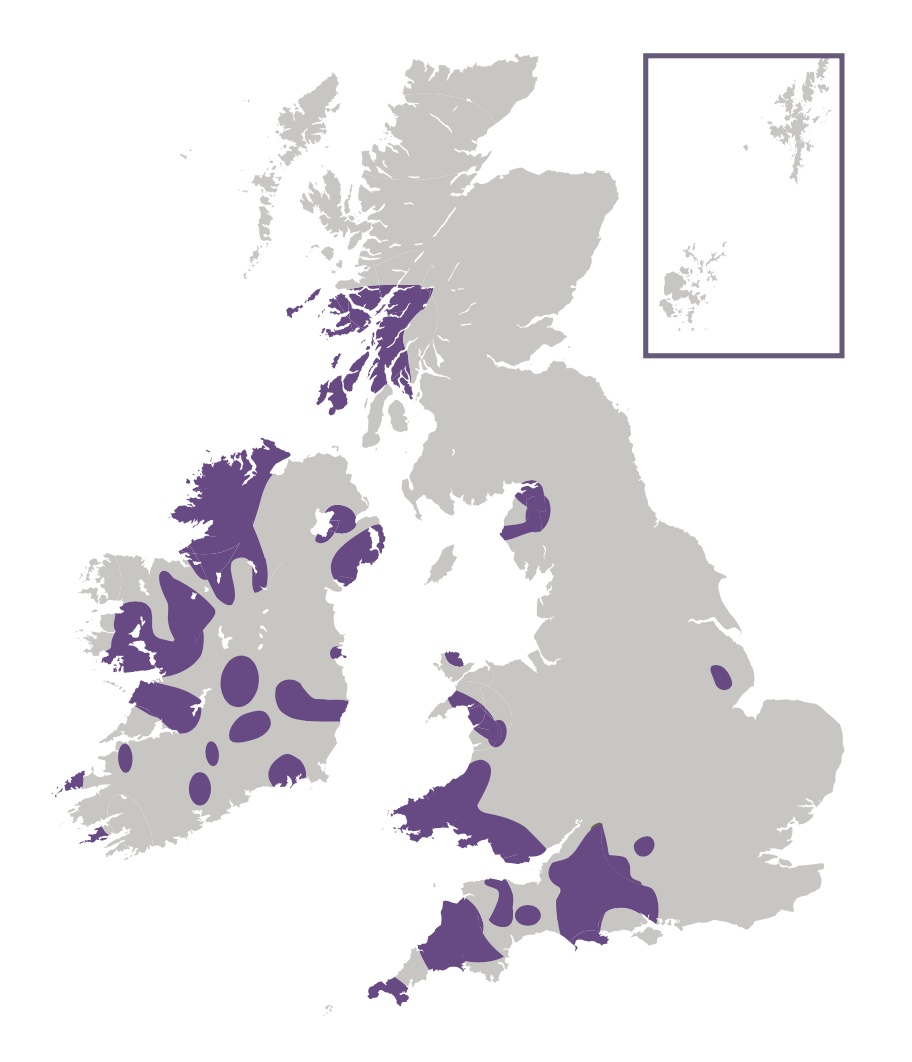
Photo © KEC
The Marsh Fritillary has the most colourful uppersides of all of our fritillaries, being a highly-variable chequered pattern of orange, brown and yellow markings. The bright colours fade after a few days and leaves the butterfly with a shiny appearance - early Lepidopterists naming this butterfly the "Greasy Fritillary" as a result. This butterfly is primarily a wetland species as its modern name suggests.
Colonies of this butterfly are known to fluctuate wildly in numbers. It may be present in some numbers one year, for the population to crash the following year before recovering as unexpectedly. This species does not do well in adverse weather conditions and also suffers greatly from larval parasitism by an Apanteles species of wasp. Unfortunately, this charming butterfly is one of our most threatened species and has suffered severe declines in recent decades.
The butterfly is found primarily in south-west England with a small population in north-west England, the islands of south-western Scotland and the adjacent mainland, and north-west and south-west Wales. It is also locally widespread in Ireland. It is not found in the Isle of Man or Channel Islands. This butterfly forms discrete colonies and even the slightest barrier will prevent dispersal - such as a hedge or a river. Colonies are typically part of a meta population with several colonies located close to one another.
As for most butterfly species, the males emerge a few days before the females and set up small territories centred on a particular plant or flower. They will dart up to investigate any passing butterfly flying nearby. They will also patrol suitable areas, in the hope of finding a newly-emerged female. Once a female is found, the male flutters around her for a short while before mating takes place. Before separating, the male seals the genital opening in the female with a substance that prevents another male from mating with her - essentially providing a "chastity belt". Both adults are avid nectar feeders and will feed from a variety of flowers, favourites including Buttercups and Thistles.
The female will search out large foodplants when egg-laying, typically choosing one of the larger leaves on which to lay. She is quite conspicuous as she makes her slow flight looking for suitable plants on which to lay, no doubt weighed down by her load of eggs.
Neither sex wanders far from where it emerged, although those emerging later in the flight season are often seen some distance from the main breeding grounds; this dispersal may be a mechanism by which this species colonises new sites.

The butterfly uses several different types of habitat, including chalk hillsides, heathland, moorland and damp meadows. A factor common to all habitats is that they are in full sun, their higher temperature aiding larval development.
Adults feed primarily on Betony (Betonica officinalis), Bugle (Ajuga reptans), buttercups (Ranunculus spp.), Cuckooflower (Cardamine pratensis), dandelions (Taraxacum spp.), hawkweeds (Hieracium spp.), knapweeds (Centaurea spp.), Ragged-Robin (Silene flos-cuculi), thistles (Carduus spp. and Cirsium spp.) and Tormentil (Potentilla erecta).
The primary larval foodplant is Devil's-bit Scabious (Succisa pratensis). Field Scabious (Knautia arvensis) and Small Scabious (Scabiosa columbaria) are also used.
